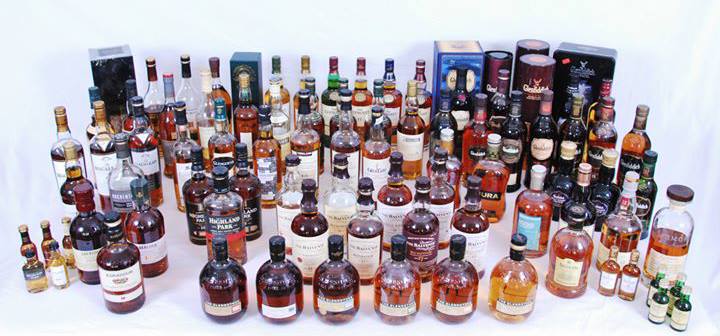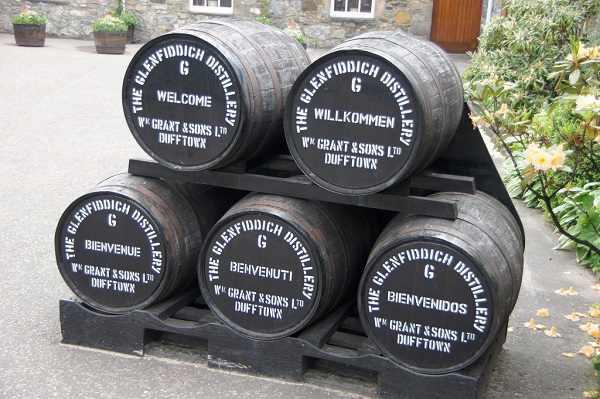One of the great pleasures of being in a Facebook group with nearly a thousand members (join us!) is that there are so many experiences. There’s always someone who has an opinion on something, whether it’s a whisky or a glass!
I think different opinions, and arguments, are the lifeblood of any good community. Take all the opinions, mix them together, and then formulate your own.
One of the ideas that’s been floating around the group is the idea of blending your own whisky. Take a few drams you like and just experiment by mixing them together, letting it sit for a bit and then see what comes out of it.
I’ve personally never tried it but one of our intrepid members, Mike, has and I wanted him to share his approach.
Take it away Mike!
Blending Your Own Scotch Whisky
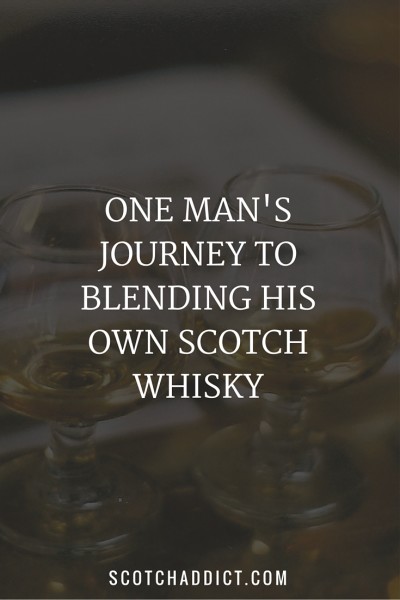 I was inspired to home blend Scotch after watching after watching Ralfy Review46. I enjoy, and agree, with his take on whisky and spirits in general. I wouldn’t call myself a connoisseur, that sounds too stuffy and self-important, and consider myself more of a hobbyist. I enjoy researching, tracking bottles, and collecting what might suit my taste.
I was inspired to home blend Scotch after watching after watching Ralfy Review46. I enjoy, and agree, with his take on whisky and spirits in general. I wouldn’t call myself a connoisseur, that sounds too stuffy and self-important, and consider myself more of a hobbyist. I enjoy researching, tracking bottles, and collecting what might suit my taste.
In review 46, he suggests lining up four short drams of the same unpeated single malt. Then, leaving the first one alone, adding incrementally more drops of peated malt into each of the other three glasses with a straw. Two drops, then four drops, then eight drops. Then nose and taste each to experience the changes that occur.
This is a cool experiment for your palate.
What’s also cool, and what I would discover as I did this myself, was that you can change a single malt into a variation of itself. Adding peat to Glenfiddich 12. Adding heavy sherry influence to something that doesn’t normally have it. The combinations are endless for collectors who have a lot of bottles on hand.
I first did this after being disappointed by a bottle I purchased and had been struggling to finish. It was a bottle of Ballantines 17 and I didn’t like it very much. I think I was too new to whisky. It’s a fine blend that I was probably not ready to enjoy early in my whisky journey.
After pouring a dram one night, I decided to try “perking” it up with a teaspoon of another bottle I was not enjoying – Aberlour 18. The result of this “in glass” blending? I learned that my palate loved the blend far better than the two separately. It was more than the sum of it’s parts, so to speak. The lightly citrus blend was lifted by the inclusion of more single malt and it’s sherry influence.
I would do an “in glass” blend a few more times before graduating to blending into a separate vessel. I cleaned several small jars for blending.
My first small jar was just an old maraschino cherry jar from the fridge. It worked fine but I wanted something better. I moved onto little 2 ounce snap top bottles I found at a local dollar store, four for $3. Now I always have five mini blends sitting around waiting to be sampled. When I want to go for a slightly different taste, I can crack one of these minis and drink something totally unique.
When blending, I don’t get too complicated. I mix 50/50, 75/25, and even 33/33/33. The point is you are using your own collection and working on choosing from you own favorite taste elements. You also don’t need to blend a lot of volume, a few ounces is all it takes to experiment. If you enjoy it, make it more.
In addition to playing with different flavor elements, you can work on “fixing” a bottle you don’t otherwise enjoy on its own. Better to blend and try to find a dram you enjoy than pour it down the drain!
Also, there are some whiskies that are so revered you might never think to “taint” it by blending. No worries, that’s ok too. But imagine if you put a few drops of Talisker 18 into your glass of Macallan 18? Give it a shot, you might be surprised. Maybe you decide to never do it again, OR, maybe you just stumbled onto a new favorite.
My current blends marrying:
- Glent Grant 2003/Coal Ila 12 – 75%/25% – Here, I love the GlenGrant on it’s own, it’s light, subtle, almost buttery. I just want to taste a hint of that quality with some peat smoke. Coal Ila is similar in subtlety (as much as an Islay can be), and without any Bowmore 12 on hand, easy choice to inject the peat. I have high hopes for this one.
- Springbank 18/Highland Park 18 – 50%/50% – Simple blending of two 18 year old quality malts to see if the sum is better than the parts. My bottle of Highland Park 18 has never really blown me away, possibly part of batch variance I’ve read about with the brand. So mixing some funky barnyard Springbank into it could make something special. This should be good.
- Arran Amarone Cask/Glenlivet Nadurra 16 – 50%/50% (both I disliked, so I’m a bit twisted) – This is pure Franken-blending. I hated the Nadurra (I’m a confirmed Glenlivet enemy), and I did not like the Amarone Cask much either. Arran makes much better age statement whisky than this Cask Finish line. Only thought here, empty the last two swallows of two bad bottles into a blend. How much worse can they get?! HAHAHA, not much hope here.
- Bowmore 12/Glenlivet 12/GKS Artist Blend – 33%/33%/33% – Again, trying to make Glenlivet palatable to me, by adding the last of my Bowmore 12, and also and already very good blend in the Great King Street Artists Blend. Adding a little single malt to a successful blend has given me some of my best blending results, and hopefully this continues that trend. The Glenlivet 12 is the least offensive, so this may turn out ok.
- Jura 16/Glenlivet 15/Redbreast 12 – 33%/33%/33% – Similar to the last one. Using up the last of Glenlivet 15 and matching up age groups. Jura 16 was enjoyable and mostly sweet toffee and honey. I was hoping to hide the Glenlivet, and Redbreast is a very good Irish whiskey to add, and my first attempt to include some Irish.
An update on the Jura/Glenlivet/Redbreast blend – since I wrote this I tried this blend. Utter failure. The Glenlivet remained a strong presence, and while I enjoyed Redbreast and Jura 16 separately, this mix was an abomination. But it was a fun trial. I learned something about the strength of the Glenlivet here, and that Redbreast would do better blending with less sweet, as I successfully have mixed it with Coal Ila in the past. It’s all about the education.
Have fun people! Post your trial combinations, no matter if they succeed or fail.
 Despite the reports of my disappearance (Thanks Tina! :)), I have not disappeared. I’ve just been home with two kids for the last ten days with the Christmas break and then the New Year… it’s left little time for writing about scotch but plenty of time enjoying it after the kiddos have gone to bed.
Despite the reports of my disappearance (Thanks Tina! :)), I have not disappeared. I’ve just been home with two kids for the last ten days with the Christmas break and then the New Year… it’s left little time for writing about scotch but plenty of time enjoying it after the kiddos have gone to bed.
 I was inspired to home blend Scotch after watching after watching
I was inspired to home blend Scotch after watching after watching 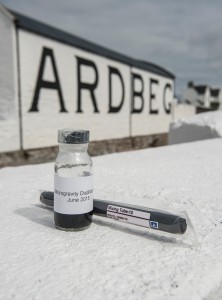
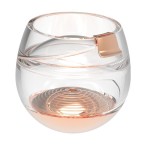 Ballantine designed a glass that will let you enjoy your whisky in space.
Ballantine designed a glass that will let you enjoy your whisky in space.